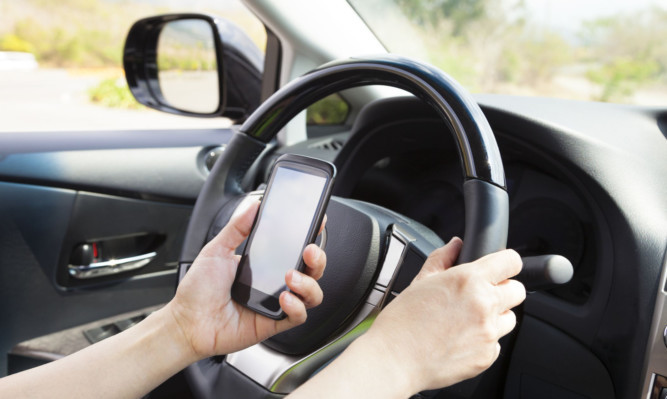
Police have a new weapon in the war against motorists who text at the wheel an unmarked truck.
The secret HGV affords its undercover team a commanding view of passing cars and whether or not they are driving dangerously .
The truck has been specially adapted so it bristles with driver-nabbing technology including video to provide that all-important documentary evidence.
The HGV is expected to be deployed on motorways and A-roads nationwide from this spring. It follows a three-month trial which ran last year in five police force areas Sussex, Hampshire, Surrey, Thames Valley and Warwickshire.
Under the pilot scheme, code-named Operation Tramline, 462 offences were detected, mostly for mobile phone and seat belt abuses.
The Operation Tramline team was made up of an HGV unit, including a police driver and an officer with a video camera, Surrey Police, which led the operation, has said.
They were supported by two police motorcyclists and a marked police car which stopped and dealt with drivers through enforcement and education.
Police said the HGV provided an “ideal viewing platform” for officers to observe drivers’ actions from a high vantage point. Now it has emerged a scheme based on the pilot is to be rolled out nationwide from March 30, in partnership with the Highways Agency.
A spokesman for the Agency said: “Safety is a top priority for the Highways Agency and that’s why we’re working with the police to tackle poor driving behaviour.
“Doing what we can to reduce incidents on our network not only improves safety, it reduces congestion and provides more reliable journeys for the four million drivers that use England’s motorways and trunk roads each day.”
During the three-month pilot period, the Highways Agency funded the hire of the HGV from MAN Trucks.
Motorists caught during the trial included a driver who was using FaceTime, a videotelephone app, while driving in slow-moving traffic, police said.
An HGV driver who was pulled over said he had not worn a seat belt for 20 years, while another lorry driver was seen drinking from a beer can.
In addition, a Lithuanian lorry driver’s excuse for being on the phone was because he said he thought it was illegal to stop on the hard shoulder.
Professor Stephen Glaister, director of the RAC Foundation, said: “Police will literally be looking down on drivers to check they are concentrating on the road.”
Police Scotland said they are “committed to making Scotland’s roads safer” but wouldn’t be drawn on whether the battle truck would appear north of the Border.

Enjoy the convenience of having The Sunday Post delivered as a digital ePaper straight to your smartphone, tablet or computer.
Subscribe for only £5.49 a month and enjoy all the benefits of the printed paper as a digital replica.
Subscribe